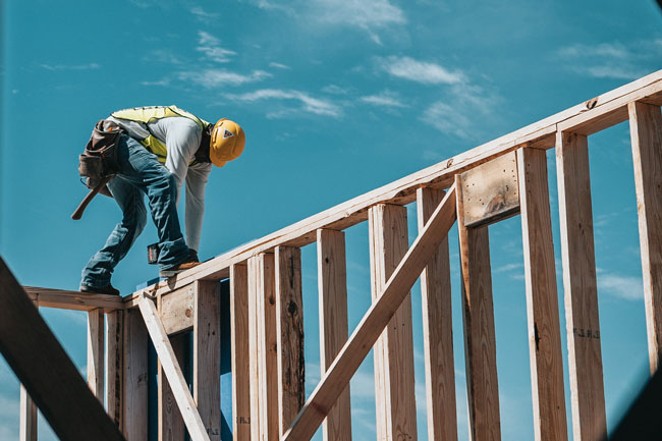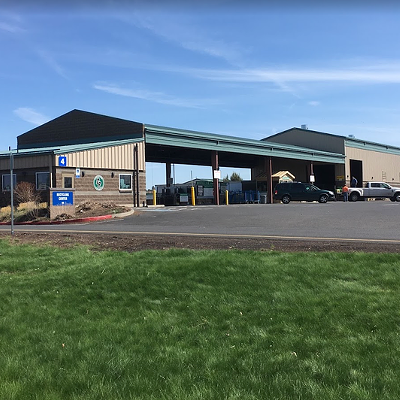As the economy gets back on track from COVID-19 and all its downstream effects like hiring shortages, supply chain disruptions and inflation, industries are getting back on track. Though the overall halt of business is long-gone, the pent-up demand that accumulated over the pandemic is still present.
Construction costs rose by 17.5% from 2020-2021, according to the U.S. Census Bureau, the largest spike since 1970. Lumber costs rose by more than 85% after wildfires disrupted U.S. timber production and tariffs were placed on Canadian wood. Metals are costing more than the pre-pandemic average. The U.S. Bureau of Labor Statistic reported the construction industry was understaffed by about 4.4% in November 2021.
Regardless, construction and contractors have been able to weather the pandemic better than others, and data from Hearth, a home improvement fintech company, found an 82% increase in home repair activity from 2019 to 2021.
"I think the pandemic definitely affected industries differently. You could tell the hospitality, airlines, travel was definitely devastated by the pandemic," said Ngan Le, the marketing and development director for Sierra James Construction. "Building bloomed, and I think that has more to do with people just being stuck at home going, 'Oh, man, that kitchen looks kind of old, maybe we should do something about it.'"
Stuck at home, more people took notice of the side projects they'd been meaning to get to, often aided by favorable refinancing rates that can line homeowners' pockets with enough cash to take on a renovation. Le also said there have been a lot more renovations to create home offices as workers settled into remote positions. Sierra James prioritizes projects on a first in, first out basis which can get tricky with larger projects.

"The supply chain is affecting a lot of different industries, including the building industry, and in our field, it just really depends on what the client wants. If it's a simple little additional closet where there isn't a lot of material needed to do it, I think that would go a lot faster," Le said. "I think a lot of homeowners and clients are doing their homework, as they should, and reaching out and vetting other contractors and doing their research on other builders, just to gauge the timelines, but a lot of it has to do with just the supply shortages, which is slowly catching back up."
That dearth of homebuilding materials can be tracked back to the Great Recession, during which a lot of lumber mills and specialized tradesman went out of business.
"They estimate that we need to build at a level of somewhere around, 1.5 million new housing units to 1.7 new housing units, just to keep up with growth, and that's just natural growth," said Steve Wilson, chief sales officer for MonteVista Homes, a homebuilding company specializing in smaller markets across Central Oregon. "We just can't build enough homes; there's not enough supply of product, and so if you look at what the output is of lumber mills, I think the output is the equivalent of maybe 1.3 to 1.5 million homes of output of product. If you can't get the product, you can't build more than that."
“We just can't build enough homes, there's not enough supply of product.”—Steve Wilson
tweet this
And a lot of that product is bypassing the typical construction market and going straight to do-it-yourselfers. A Harvard survey found that by May 2020, 80% of homeowners began a home improvement project. Home Depot reported a net sales increase of nearly 20% in 2020, and Lowe's rose by nearly 25%. Going it alone on a home improvement journey brings its own set of headaches.
A study commissioned by BJ's Wholesale Club and conducted by OnePoll revealed that four in 10 people have more DIY failures than successes, that 45% have completely failed a project, 57% wish they'd sought professional help and 56% get so flustered they seek help from their parents. Hiring professional contractors can be a time-consuming process, but usually less so than taking on a project by oneself.
The DIY market steadily grew throughout the pandemic, but experts at the Leading Indicator of Remodeling Activity expect home improvement spending to peak by May.
"While annual owner improvement and repair spending could reach $430 billion by the second half of 2022, several headwinds may still temper growth expectations this year," says Abbe Will, associate project director of the Remodeling Futures Program, in a statement. "The rising costs of labor and construction materials, difficulty retaining contractors, and climbing interest rates could discourage owners from undertaking new or larger remodeling projects."

























